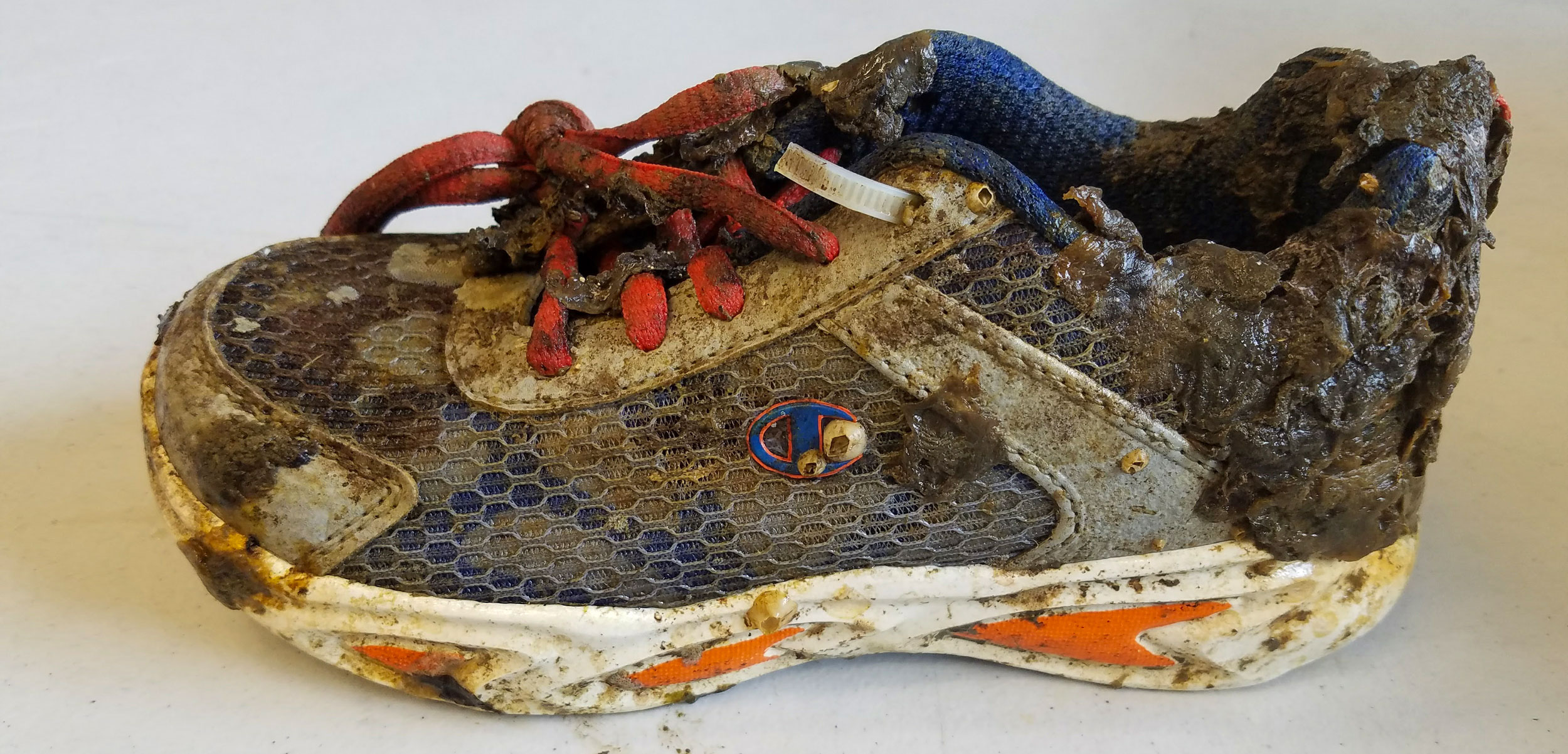Barnacles Are a Clock for the Dead
Barnacles adhere to everything from rocks and logs to shoes and clothes, giving forensic scientists a way to tell how long a body has been in the water.
Article body copy
In 2012, Paola Magni, a forensic biologist, then a doctoral student at the University of Turin, Italy, was approached by a forensic pathologist with a mystery. A highly decomposed body had been found on Italy’s southwest coast. The pathologist had few clues on how long the John Doe had been in the water but there was one lead to chase: the dead man’s pants and shoes were encrusted with barnacles.
Magni was captivated. She reviewed ocean temperature records from the region and research on how barnacle growth rates are affected by the physical environment. From that, she estimated that the body had likely been in the water between 65 and 90 days. Magni’s analysis became part of the forensic pathologist’s report as an expert witness in court. Though her estimate was accepted by the court, her investigation demonstrated an important gap.
Even though barnacles are widely studied—they were a beloved subject of Charles Darwin, after all—the information collected by biologists is different from what a forensic investigator would want to know.
Barnacle growth rates vary wildly depending on species, location, and sea temperature. So if an estimate derived from barnacle growth rates says a body was in the water for 10 days, a defense lawyer is going to wonder whether that information came from barnacles growing in a natural environment, such as on a rock, or in an unusual environment, such as on a shoe, says Magni, who now works at Murdoch University in Perth, Australia, and Singapore.
The experience prompted her to start collecting data on how barnacles grow on shoes as part of a quest to ensure timeline estimates continue to hold weight in court.
So, in 2016, Magni and her colleagues lowered four lobster cages containing 128 shoes into Boston Harbor, Massachusetts. The shoes, patent leather dress shoes and sneakers made of plastic and synthetic fabric, were meant to test footwear that might plausibly be found on corpses in the marine environment.
The scientists focused on shoes because a body decomposing in water turns into a slippery, waxy substance called adipocere, to which barnacles find it difficult to attach. But the invertebrates seem to love shoes.
Within two weeks, tiny juvenile bay barnacles flecked the sides of the shoes. At seven months, they were studded with adults. Barnacles seemed to prefer patent leather over gym shoes, and tended to congregate on the outside of the shoe. Growth was affected by water temperature, but not salinity.
The research builds on previous explorations of barnacles’ potential for timestamping how long human remains had been in the water. In earlier work, scientists examined how the size of the circular, cement-like footprints barnacles create when they attach to a surface can be used to estimate how long they had been attached and how long the surface had been submerged. Another study used the large barnacles protruding from a skullcap fragment to determine its age.
But Magni isn’t only looking at shoes. Along with Murdoch University oceanographer Jennifer Verduin and undergraduate student Elysia Tingey, she is also investigating barnacle colonization on various fabrics, such as satin, velvet, cotton, and neoprene, the material used in wetsuits.
The researchers found that it takes around 28 days for larval barnacles to attach to neoprene—the fastest colonization rate of the fabrics tested. There wasn’t any apparent colonization pattern for velvet and the cotton disintegrated before many barnacles could settle.
“Magni’s work is really valuable and hopefully will provide a foundation for marine forensics to blossom in the next few years,” says Thomas Mesaglio, an undergraduate student at the University of New South Wales in Sydney, Australia, who studies the forensic potential of goose barnacles alongside biologist Iain Suthers.
“There is a good grasp of terrestrial forensics using invertebrates, but in a marine context it is often expensive and logistically difficult to conduct ocean studies,” Mesaglio adds.
To Magni, the victim in Italy whose case transformed her research direction is never far from her mind. She dedicates her work not only to him, but to all the people found at sea who’ve never been identified. With even more careful forensic research, Magni hopes barnacles can be a witness for the dead.

